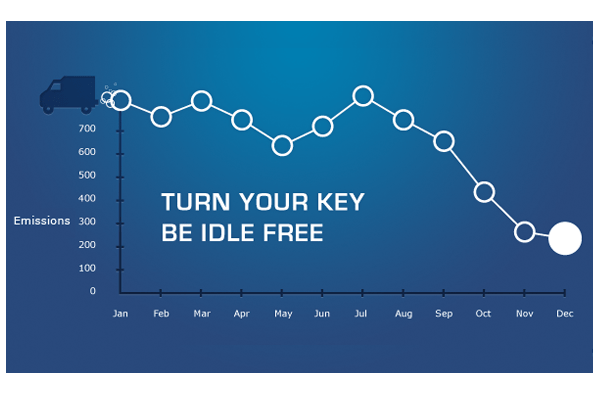Idling Time: What’s Preventable & What’s Acceptable
When it comes to obtaining return on investment (ROI) information with GPS fleet tracking technology, the lowest hanging fruit typically revolves around fuel savings by reducing speeding and idling time. Idling time can be defined as the duration of time the engine is running and the vehicle is not moving. When looking at the total idling time, the lower the amount the better right? Maybe, maybe not.
For example: Driver 1 has a total of 300 minutes of idle time and Driver 2 has a total of 250 minutes of idle time. If the lowest total idle time is better, Driver 2 is doing a better job correct? Not in this case.

To completely understand and address the idle time, we need to break it down into three segments:
- Idle time before the trip
- Idle time during the trip
- Idle time after the trip
Check out the chart below. The majority of preventable idling time occurs during the before and after trip segments. This time spent idling can be reduced by the use of the idling reduction campaigns which establish one-on-one communication with drivers, peer pressure, and continual feedback using the idling reports.
Idling time can be significantly reduced by instilling a culture that prohibits the running of the engine during pre-inspections, filling out paper work and on any/all activities where having the engine running is not necessary.
Idling time during the trip can be used in route planning because it helps to indicate travel conditions for a given area or route. Idling time during the trip is usually attributed to traffic signals, traffic conditions & driving conditions. It is more than likely drivers do not have direct control of this idle time, this route and time-of-day can be evaluated to ensure travel delays (idling time) is reduced as much as possible.
After analyzing the segments, Driver 1 has 100 minutes of preventable idling time while Driver 2 has 200 minutes of preventable idling time. In this particular example, Driver 1 is doing a better job of controlling preventable idling time.
To be effective in reducing the idling time of your drivers you need to look a little below the surface to fully understand what a good idling time is. To learn more about how telematics technology can help you better optimize your fleets, try our Fleet ROI Calculator or contact one of our Fleet Consultants.

